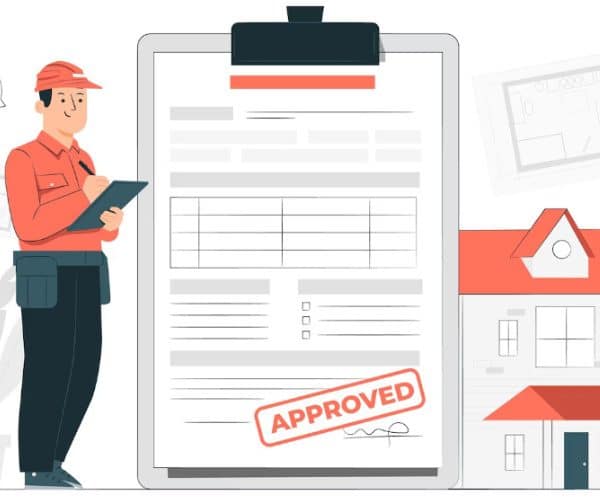Distribution cost is the set of costs that a business incurs while delivering an order from its warehouse to the customer. This can include costs related to storage, packaging, transportation, and even customer service.
Before we explore the components of distribution cost and techniques to keep it under control, let’s first go through its importance for businesses.
Why Calculating the Distribution Cost Crucial for Businesses?

This is why calculating the distribution cost is essential for businesses:
Impact on Product Pricing
Distribution cost is a component of the final COGS (Cost of Goods Sold), which is why it impacts product pricing. Businesses should thoroughly assess how much of the final price is being taken up by the distribution cost.
If businesses keep the distribution process efficient and its cost low, it can result in affordable prices for the customers. This is good for market positioning and revenue generation.
-
Impact on Profitability
A high distribution cost can diminish the profitability of the company whereas keeping it low can enhance profitability. Controlling this cost can make all the difference for profits, especially in industries where the profit margin is already thin.
One thing that companies should ensure while decreasing the distribution cost is that it doesn’t impact the quality of services. The cost should be decreased to the point where the services are of quality for customers.
Impact on Competitive Advantage
Decreasing the distribution cost and consequently decreasing the product prices can give a competitive advantage to the businesses. This helps in setting the company apart from its competitors, giving it a better chance at sales and profits.
An efficient distribution process can also enhance the customer’s trust in the business and improve the reputation of the business in the market.
Impact on Customer Services
The distribution cost can have a deep impact on customer service. Most businesses manage the distribution cost by charging the customers accordingly.
This means that keeping it low by improving the system reduces the cost for customers. On the other hand, if the distribution system isn’t efficient, customers will be charged extra, increasing the overall cost for them.
Distribution cost can be called an umbrella term because several types of operation and managerial costs are a part of it. Let’s explore some below.
Major Types of Distribution Cost
Following are the major types of distribution costs:
Inventory Storage Cost
When a business purchases inventory from the supplier, usually it spends some time at the warehouse. Storing this inventory costs the business, depending on the amount and the care it needs.
In most cases, businesses add this storage cost to the distribution cost. This is why a product that spends less time at the warehouse can have less distribution cost and vice versa.
Freight and Shipping Costs
Freight and Shipping costs make up the majority of the distribution cost. These are the transportation costs of products from the warehouse to the customer.
Businesses should try to make transportation as efficient as they can so that less cost can be passed on to the customer. Handling multiple orders together, using better fuel options, better carriers, and hiring professional staff are some strategies to improve the transportation process.
Product Handling Cost
Product handling cost is usually added to distribution cost for products that are high maintenance. These mostly include perishable or semi-perishable products.
Such products need special storage spaces and specialized carriers for transportation. This is why the cost is high and the handling aspect is usually taken from the customer as high distribution cost.
Marketing Cost
Marketing costs can also constitute the distribution cost. This includes print advertising, billboards, radio marketing, etc.
Another aspect of marketing cost is the discounts and promotions. In this case, some companies may reduce the price of products but make it up with the Distribution Cost to keep the profit level high.
So by now, it has been established that keeping the distribution cost low is essential for businesses. Let’s see how this can be done.
Also, read about inventory control.
Strategies to Reduce the Distribution Cost

Businesses can adopt the following strategies to keep the distribution cost low:
Efficient Supply Chain
An efficient supply chain can enhance the distribution process.
This can be done by carrying out a distribution cost analysis. This way, businesses can analyze what is resulting in the high distribution cost. And then find ways to reduce it accordingly.
Alignment of Business Strategy with Distribution Strategy
A distribution strategy that is aligned with the business strategy can do the trick in keeping the prices competitive in the market. This way, businesses can save finances by adjusting the distribution cost.
This can also streamline the operations as both strategies are in alignment.
Better Space Utilization
Utilizing the warehouse space for products properly can reduce the distribution cost. This is because less finance spent on storing products can reflect a low distribution cost.
This doesn’t mean that the quality of services should be neglected. This means that such ways can be devised so that less is spent on maintaining these products in the warehouse.
Optimizing Order Management
Managing orders effectively is the best way a business can save on distribution cost. For example, if there are multiple customers in one area, inventory distribution can be managed in a way that deliveries take place together.
This approach reduces fuel costs.
Conclusion
Businesses should strive to keep the distribution cost low but not to the point where the quality of products and services is compromised. There are several components of this cost that can facilitate the business in reducing it.
This can be done by keeping the essential ones while reducing the cost of other components of distribution cost.



